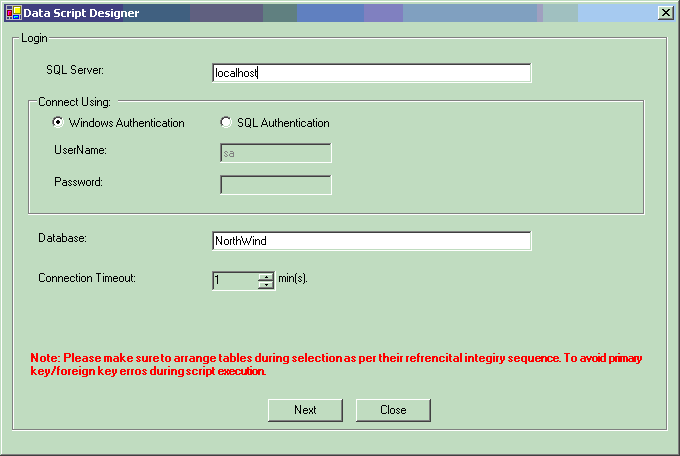
First Step

Second Step

Third Step
Introduction
By default SQL Server provides a facility to generate script for Database Objects. But their is no option offered by SQL Server to generate insert statements for the existing data in the tables. I faced this problem several times while creating application installer, I always had to ask someone to create insert statement for the master data or some data mandatory for application installation.
To overcome problem of manually generating Insert statements for SQL Server, I finally decided to build a wizard based utility that allows user to genrate insert scripts.
Using this tool
This tool is developed in C#, so we need to make sure we have Microsoft .Net Framework 1.1 installed on the system. It can generate sql scripts in 3 simple steps:
1. Enter connection detail for your SQL Server.
2. Select the tables, and organize them as per thier relation in the database i.e. Master should come first and then dependent tables to avoid refrential integrity error statements
3. Click on "Copy" button to copy generated statement to clipboard
Points of Interest
This component is as free as .Net Framework library.
History
1. Revised verson uploaded on 25-Jun-06 - To display truncate statements and handle UniqueIdentifier datatypes
2. Initial version added on 15-May'06
